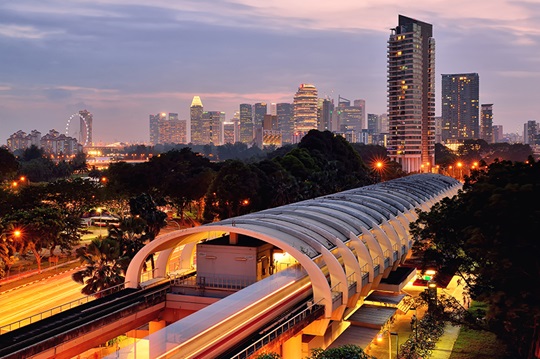The choices we make in our day-to-day life and activities can leave a mark on the environment. We are aware of the pressing need to do what's best for the environment so that we can mitigate the effects of climate change. But it can be tough to know how exactly to reduce your carbon footprint. The good news is that there are plenty of ways to make a difference even if you’re just starting out. As more of us are returning back to working in the office, it is also important now more than ever to look into ways of minimising our carbon footprint at the workplace.
While reducing your carbon footprint can seem like a daunting task, it doesn't have to be. Small daily changes can lower your environmental impact and help fight climate change.
Join Senoko Energy on our #TakeCharge initiative to reduce carbon emissions, support renewable energy sources and encourage sustainable lifestyles. Each one of us have our part to play in the sustainability leap forward and we can do so by incorporating green habits into our daily lives.
Read on for helpful advice on how you can shrink your carbon footprint and make a positive impact on the planet.
A carbon footprint is the amount of greenhouse gases released into the atmosphere as a result of human activities. People, products and industries all have carbon footprints. Your personal footprint is the emissions from your daily activities and lifestyle such as transportation, the food you eat, the clothes you buy, and the waste you throw away.
The larger a footprint is, the more of an impact it has on the environment. On a larger economic scale, activities such as the burning of oil, coal and gas, as well as deforestation cause increased greenhouse gas emissions in the atmosphere. Other significant sources of carbon emissions come from electricity, transportation, agriculture, industrial, commercial and residential activities.
Senoko Energy play our part in lowering carbon emissions through upgrading our plant and proactively seeking to adhere to global ISO standards for power generation and evolving local standards by regulators. We achieve an annual abatement of 14,985 tCO2e / year, equivalent to offsetting 4,595 cars off the road.
It is crucial to reduce our carbon footprint so that we can combat global climate change, improve public health, boost global economy and maintain biodiversity. By cutting down on carbon emissions, we ensure there is cleaner air, water and food globally for the current and future generations.
Reducing carbon footprint has extensive benefits such as:

As more of us are returning back to working in the office, it is also important now more than ever to look into ways of minimising our carbon footprint at the workplace. A key initiative is to create awareness of the need for a smaller carbon footprint and actionable steps to cut down on carbon emissions.
Here are some further tips:

Take Charge and start your journey to a smaller carbon footprint with Senoko Energy. We aim to work together towards a better future for all. Some options we provide include optimising your energy usage with our smart energy solutions, and cleaner energy solutions for better sustainability and fewer carbon emissions. Speak to us today to reduce your carbon footprint with green energy.